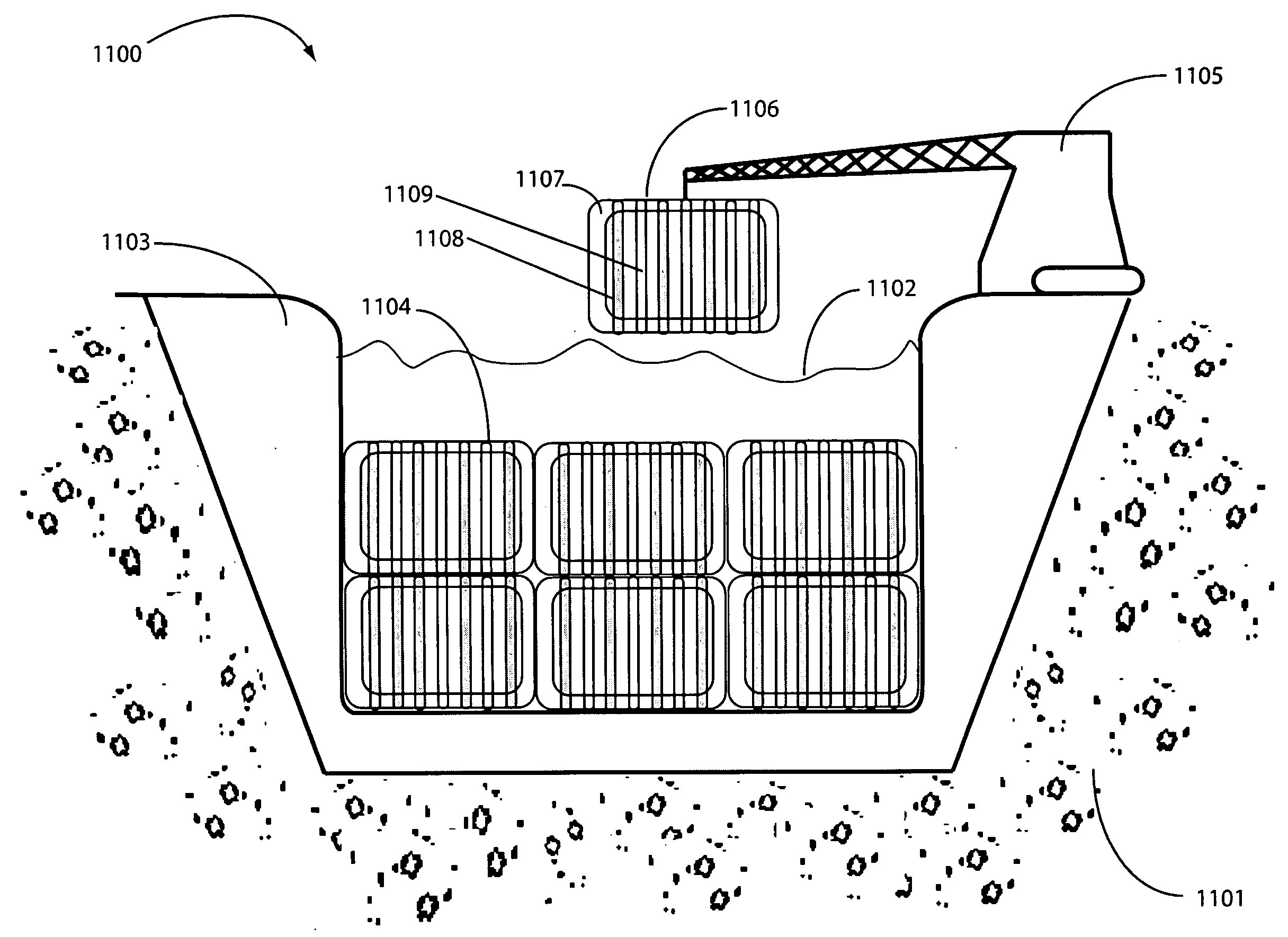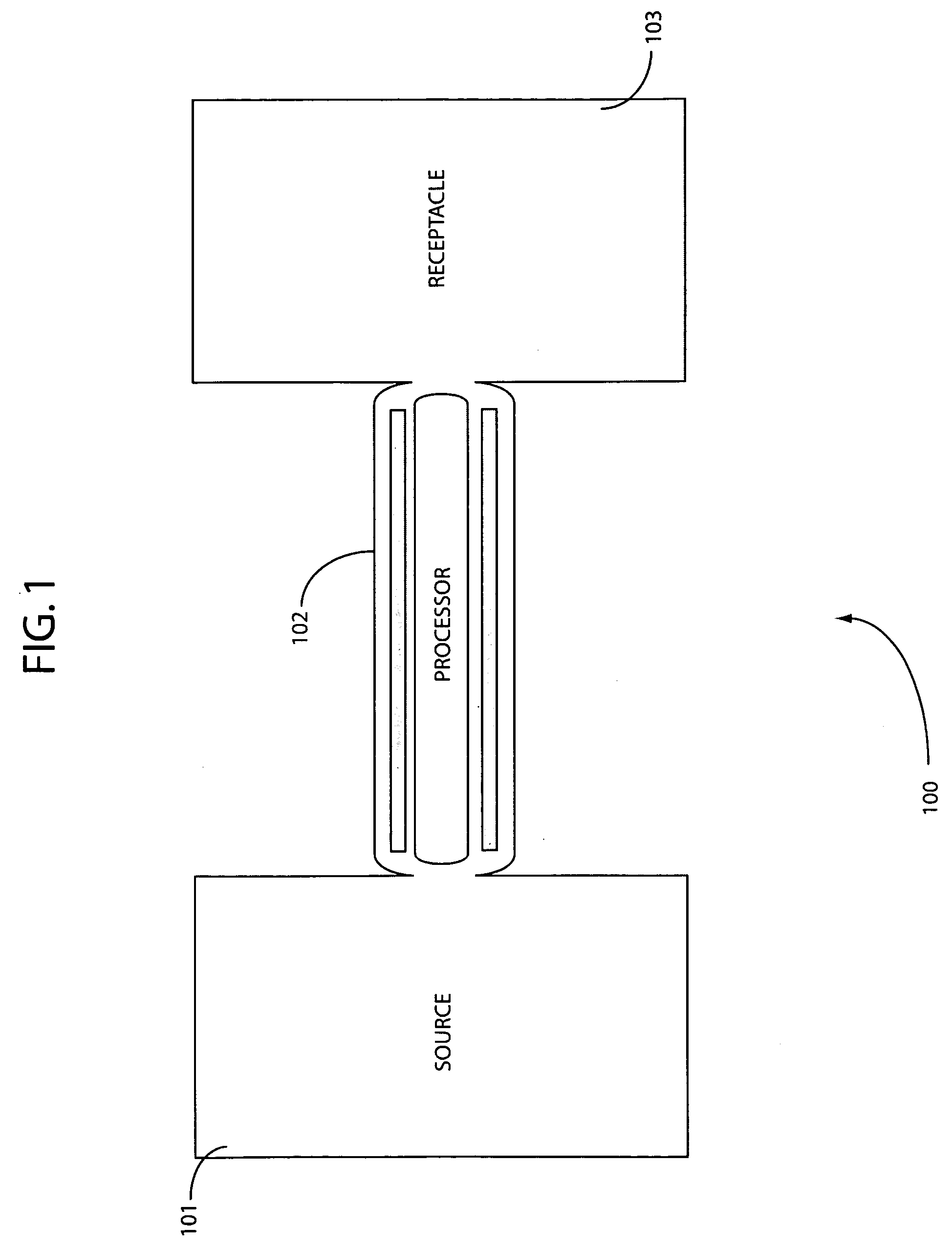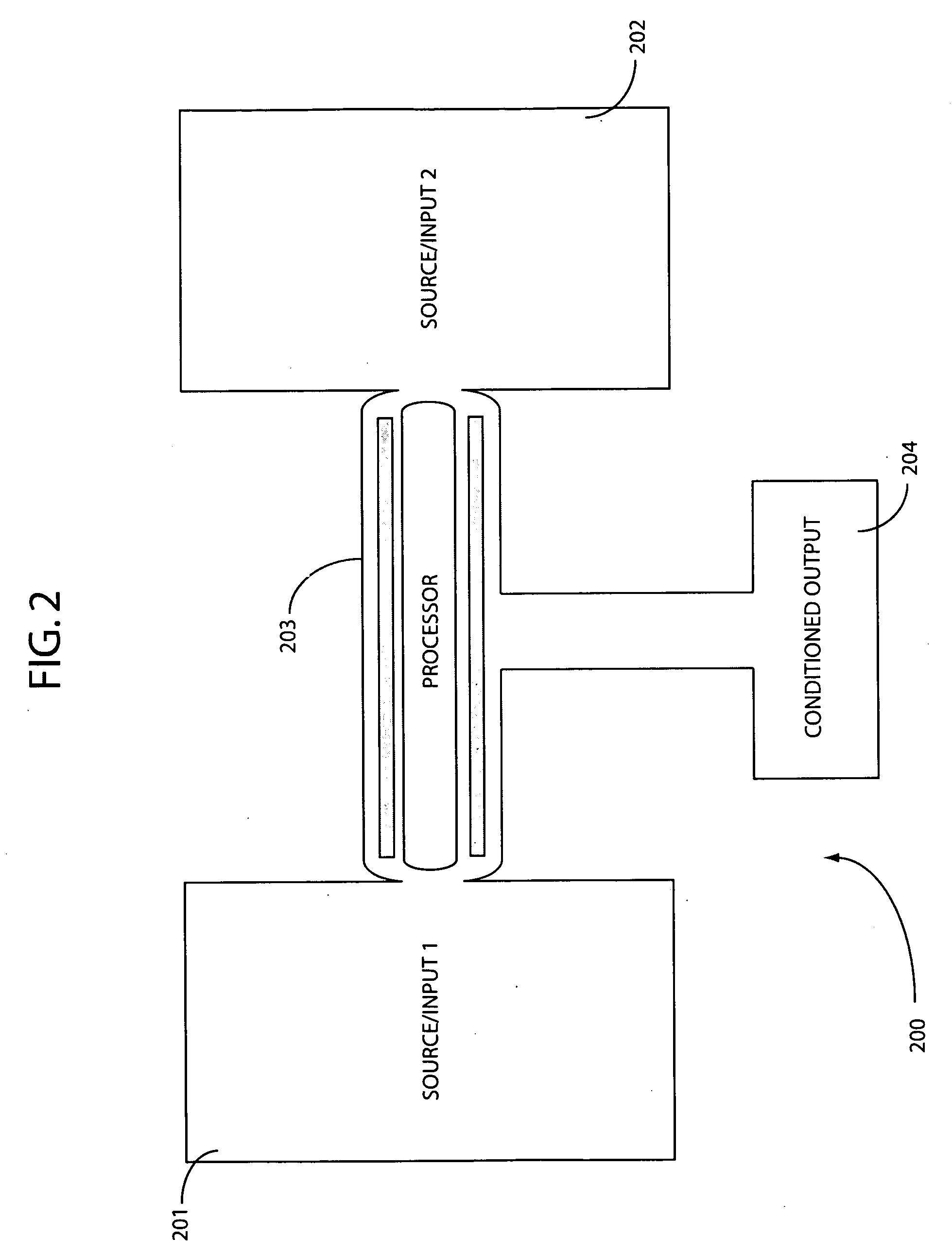System for conditioning fluids utilizing a magnetic fluid processor
a magnetic fluid processor and processing system technology, applied in the direction of fluid pressure measurement, liquid/fluent solid measurement, peptides, etc., can solve the problems of increasing the weight of the device, cumbersome construction, transportation and installation of the device, and the use of a solid core in such larger devices, etc., to achieve convenient reconfiguration for processing fluids efficient and cost-effective removal or adding electrons
- Summary
- Abstract
- Description
- Claims
- Application Information
AI Technical Summary
Benefits of technology
Problems solved by technology
Method used
Image
Examples
example 2
Percolation Enhancement
[0154]Water percolation is a process that is often used by water districts to replenish their underground water supplies. Most often water from a river flow is routed to collection ponds directly over their underground aquifer which they draw water from and with further treatment they then provide this water to their customers as drinking water.
[0155]These ponds also serve as a primary filtration system analogous to giant sand filters that pre-filters the water prior to entering the underground porous layer called the aquifer. The percolation process using these ponds is effective and has been used for many years. The percolation rate drops off as the pond bottom becomes loaded with settling particulate and algae.
[0156]These materials form a layer typically called scale, which dramatically decreases the flow rate through the pond bottom and into the aquifer below. It is common practice for the water district to stop the flow of water into the pond(s) and allow...
example 3
De-Watering Processes
[0158]Mechanical de-watering processes are often used to reduce the overall weight and volume of materials that are wet. These materials can have high amounts of surface moisture combined with “bound water” which is described as intra-cellular or extra-cellular moisture or a combination of both.
[0159]Municipal sludge is a material that is de-watered prior to hauling to disposal sites or other process sites. Coal and sawdust are de-watered to raise their Btu values.
[0160]Existing mechanical processes such as filter belt presses, centrifuges or screw presses use pressure or centrifugal force to break the bonds between the water and the material it is bound to. As a pre-treatment the inline processor serves these mechanical processes by stripping away electrons from the water and contaminates contained therein. The molecular bonds between these materials and water become broken and all materials disassociate with much more ease. This raises the efficiency and effec...
example 4
Applications to Fuel Systems
[0161]An in-line processor in accordance with the present invention serves this application by increasing the Btu or caloric output of fuels while reducing the combustion emissions or byproducts. All fuels liquid, gases or solids are typically in a neutral charge state, which basically means they have equilibrium between total negative and positive charges. A processor, in accordance with one embodiment of the present invention, removes electrons from these fuels and causes the fuel to become positively charged prior to the addition of air.
[0162]Fuel requires air for combustion to take place. The air serves to re-supply the required electrons to the fuel since air is electronegative and gives up electrons readily. This electron sharing process causes the air to more uniformly bond to the fuel with the resulting benefit of a more complete and efficient fuel system.
PUM
| Property | Measurement | Unit |
|---|---|---|
| Electrical conductivity | aaaaa | aaaaa |
| Polarity | aaaaa | aaaaa |
Abstract
Description
Claims
Application Information
 Login to View More
Login to View More - R&D
- Intellectual Property
- Life Sciences
- Materials
- Tech Scout
- Unparalleled Data Quality
- Higher Quality Content
- 60% Fewer Hallucinations
Browse by: Latest US Patents, China's latest patents, Technical Efficacy Thesaurus, Application Domain, Technology Topic, Popular Technical Reports.
© 2025 PatSnap. All rights reserved.Legal|Privacy policy|Modern Slavery Act Transparency Statement|Sitemap|About US| Contact US: help@patsnap.com



